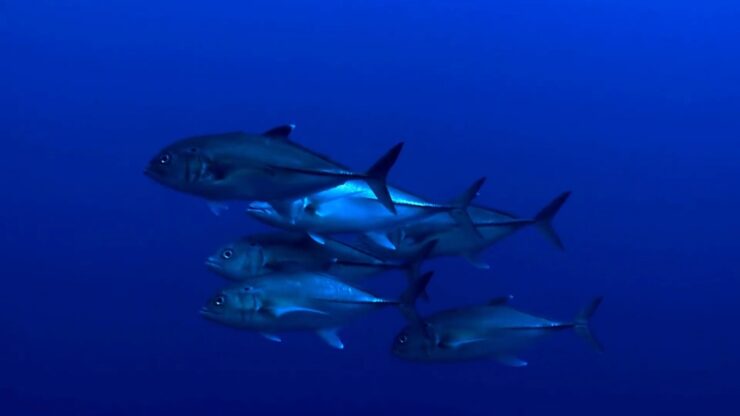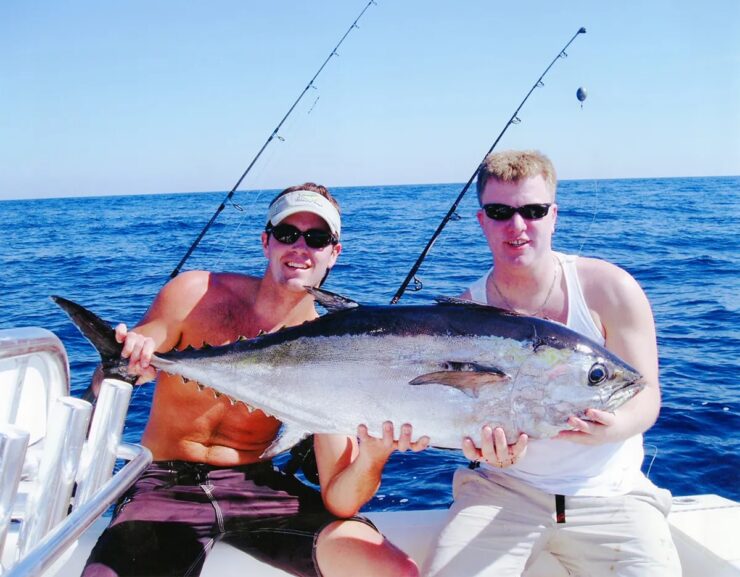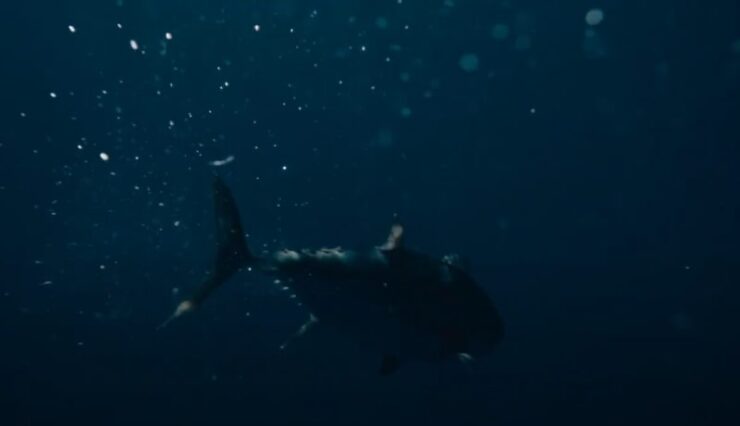Found commonly in waters such as the Florida Keys and other tropical locales, observing its abilities inspires awe. Studying this fish provides perspective on the diversity of ocean life. It also illuminates the thrill of sport fishing. Learning about the blackfin tuna enhances comprehension of our marine environment.
Physical Characteristics
Blackfin Tuna reaches up to 40 inches in length and weighs up to 46 pounds. It has a sleek, torpedo-shaped body that aids in swift movement. The back displays dark blue to black colors, while the belly is silver.
Long pectoral fins enhance its streamlined appearance. Small, compact scales cover the entire body. An oblique mouth helps it capture prey efficiently. These features make Blackfin Tuna a remarkable species in the ocean.
Habitat and Distribution

Blackfin Tuna thrives in tropical and subtropical waters. Commonly found in the Florida Keys, it prefers warm, clear waters. This species often stays near the surface, in depths up to 300 feet. The warm currents and abundant food supply in these regions create an ideal environment for Blackfin Tuna. Its presence in these waters makes it a popular target for fishermen and a key species in the marine ecosystem.
Related: Fish Facts: Yellowfin Tuna
Speed and Movement
Blackfin Tuna ranks among the fastest fish in the ocean. It can swim at speeds up to 46 mph. This incredible speed allows it to chase down prey and evade predators effectively. The streamlined, torpedo-shaped body reduces water resistance, enhancing its ability to move quickly through the water.
Its long pectoral fins also contribute to its agility, providing balance and precise control during rapid movements.
Lifespan and Growth
Blackfin Tuna has a relatively short lifespan, living over five years. However, it makes up for this with its rapid growth. Each month, it grows between .4 to .6 inches. This quick growth is crucial for reaching a size that helps avoid predators.
Growth rates can vary based on the availability of food and the conditions of their environment. In areas with abundant food, young Blackfin Tuna can quickly reach a size where they can effectively hunt and protect themselves.
Diet and Hunting Behavior
Blackfin Tuna is a carnivorous predator. It primarily feeds on smaller fish, squid, and crustaceans. Using its speed and agility, it can catch swift prey with ease. The oblique mouth, along with sharp teeth, allows for effective hunting.
Feeding usually occurs near the surface, where schools of baitfish are abundant. During feeding frenzies, Blackfin Tuna can be seen leaping out of the water. This behavior not only helps in catching prey but also aids in avoiding predators. The combination of speed, sharp senses, and strategic hunting techniques makes Blackfin Tuna a formidable hunter in the marine ecosystem.
Related: Fish Facts: Skipjack Tuna
Fishing and Sport
Found primarily in the Florida Keys and other tropical waters, Blackfin Tuna is accessible to many fishing enthusiasts. The average catch ranges from 19 to 28 inches in length, weighing between 7 to 30 pounds. However, larger specimens are not uncommon, with the world record standing at 45 pounds. Peak fishing seasons are typically in the spring and fall, with early mornings and late afternoons being the best times to fish.
The largest Blackfin Tuna ever recorded weighed 49 pounds and was caught off the coast of Florida.

Fishermen employ various techniques to catch Blackfin Tuna, including trolling with artificial lures and live bait fishing using pilchards or small mackerel. Chumming is also effective in attracting these fish.
Anglers need medium to heavy-duty rods and reels, equipped with strong lines and fluorocarbon leaders to handle the tuna’s powerful runs. Many fishing charters in the Florida Keys specialize in Blackfin Tuna, providing the necessary equipment and local expertise. Competitions like the Destin Fishing Rodeo feature Blackfin Tuna as a key species, with winning fish often weighing around 30 pounds.
Beyond the thrill of the catch, Blackfin Tuna is highly valued for its rich, flavorful meat, making it a popular choice for sashimi, steaks, and other seafood dishes. Freshly caught Blackfin Tuna is a delicacy in many coastal restaurants. However, responsible fishing practices are essential to ensure sustainable populations. Anglers are encouraged to follow local regulations, including size and bag limits, to help preserve this species for future generations.
Official regulations for Blackfin Tuna fishing in Florida include a bag limit of two fish per person per day and a minimum size limit of 27 inches fork length.
Related: Fish Facts: Baby Bluefin Tuna
Last Words
In summary, the blackfin tuna calls tropical waters like the Florida Keys home. Their distinctive speed and physical traits set them apart from other tuna species. Both recreational anglers and local economies benefit from this fish. As long as regulations and best practices for responsible fishing are followed, blackfin tuna populations can be sustainably managed

